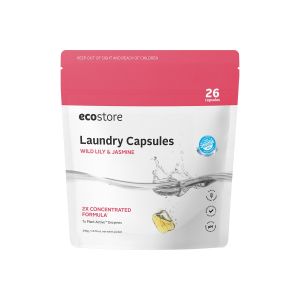Protease

Protease
Proteases are a type of enzyme that can be used to target protein-based stains such as grass, blood, body fluids, and food soils. Proteases can be used in household products to improve cleaning performance and efficiency.
Enzymes are a kind of protein that occur naturally in the body, but have also been engineered for use in commercial cleaning products for many decades. The enzymes we use are produced in microbial systems, and they work by speeding up chemical reactions. When used in cleaning products, they can help dissolve stains attached to clothes or dishes by converting them into substances that are more easily removed in the cleaning process.
Protease is effectively able to target protein chains in common stains such as egg, milk and sebum (skin oil), breaking them down into small fragments that are water-soluble and more readily rinsed off.
Regarding their safety profile, extensive testing in large scale human studies has shown no evidence of the ability of enzymes in cleaning products to induce skin sensitisation. The large molecular weight of enzymes suggest they would not be able to penetrate intact skin. Any contact with wash solutions is not linked to significant irritation or allergy and residues on fabrics are so low they are not known to materially contribute to any skin effects. The combined evidence of substantial research has been sufficient to establish a long history of safe consumer use of enzyme containing products.
Enzymes also have a good environmental profile - they're readily biodegradable and are inactivated to a large extent under washing or cleaning conditions, minimising their impact when they reach the environment. Using enzymes can improve cleaning performance, increasing efficiency and reducing the amount of water and other surfactants required.
Other names: Bacterial Protease
Chemical class: Proteins
Chemical structure depicted: (Grass stain compounds) Chlorophyll, Lutein
REFERENCES
Niyonzima, F. N., & More, S. (2015). Detergent-compatible proteases: microbial production, properties, and stain removal analysis. Preparative biochemistry & biotechnology, 45(3), 233–258. https://doi.org/10.1080/10826068.2014.907183
Valls, C., Pujadas, G., Garcia-Vallve, S., & Mulero, M. (2011). Characterization of the protease activity of detergents: laboratory practicals for studying the protease profile and activity of various commercial detergents. Biochemistry and molecular biology education : a bimonthly publication of the International Union of Biochemistry and Molecular Biology, 39(4), 280–290. https://doi.org/10.1002/bmb.20488
Basketter, D., Berg, N., Broekhuizen, C., Fieldsend, M., Kirkwood, S., Kluin, C., Mathieu, S., & Rodriguez, C. (2012). Enzymes in cleaning products: an overview of toxicological properties and risk assessment/management. Regulatory toxicology and pharmacology : RTP, 64(1), 117–123. https://doi.org/10.1016/j.yrtph.2012.06.016
HERA Human & Environmental Risk Assessment. (2005). Amylases, Cellulases and Lipases. Retrieved on November 26, 2021 from https://www.heraproject.com/files/38-F-Hera_Bridging_document_28.10.05.pdf
Basketter, D., English, J., Wakelin, S. and White, I. (2008), Enzymes, detergents and skin: facts and fantasies. British Journal of Dermatology, 158: 1177-1181. https://doi.org/10.1111/j.1365-2133.2008.08561.x
National Center for Biotechnology Information (2021). PubChem Compound Summary for CID 5748352, CID 5748352. Retrieved December 7, 2021 from https://pubchem.ncbi.nlm.nih.gov/compound/5748352.
National Center for Biotechnology Information (2021). PubChem Compound Summary for CID 5281243, Lutein. Retrieved December 7, 2021 from https://pubchem.ncbi.nlm.nih.gov/compound/Lutein.



